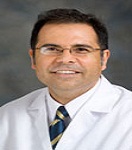Day 1 :
Keynote Forum
M N V Ravi Kumar
Texas A&M Health Science Center, USA
Keynote: Sneaking through the intestinal barriers using polymer Nanosystems
Time : 10:00-10:30

Biography:
Ravi Kumar is the Professor at Department of Pharmaceutical Sciences, Texas A&M Health Science Center in College Station. His research in drug delivery has won him numerous awards including the British Pharmaceutical Conference Science Medal , UK (2009), Tom Gibson Memorial Award by British Society of Plastic Surgeons & the Royal College of Physicians and Surgeons, UK (2008), Indian National Science Academy (INSA) Medal for Young Scientist, India (2007). He was awarded Alexander von Humboldt Research Fellowship, Germany (2002).
Abstract:
The innovator companies ideally look up to novel delivery technologies for extending the life-cycle of the many existing drugs that are or will be off patent to maintain their hold on the market. These delivery technologies are expected to not only extend the life-cycle but also the performance compared to the parent product. The delivery technologies have evolved from simple tablets and capsules to most sophisticated “nanosystemsâ€. These nanosystems are not only capable of improving solubility and permeability limited bioavailability of vast majority of drugs/drug like compounds but also possibly target them to cell or tissue of interest. In this lecture, I present the progress we made in peroral drug delivery from passively absorbed nanosystems to receptor mediated delivery
Keynote Forum
Mohammad Refaat Khattab
Cairo University, Egypt
Keynote: Drug delivery and generic medicine: The challenges ahead - choose where to play - MENA as an industry model
Time : 10:30-11:00

Biography:
Mohammad Refaat Khattab has completed his PhD from Cairo University. He has a unique blend of experience between science and business as he was COO of one of the biggest generic pharmaceutical companies in Egypt – MENA. Also, he worked with Bristol - Myers Squibb for more than 8 years, in addition to his extraordinary and novel consultation projects in pharmaceutical industry in MENA region. This experience delivered to him the value chain in drug delivery and its impact on the commercial process and applied practice.
Abstract:
Although there is still room for growth in generics, delivering it has become more complex. Given that penetration rates are as high as 80 percent in the US and 70 percent in Central and Eastern Europe, significant potential exists for volume penetration in many markets. In addition, between $20 and $60 billion of originator sales will continue to go off-patent each year. However, generics companies face considerable challenges to their profitability and growth. The continent of Africa is becoming a large opportunity. The broader pharmaceuticals market, currently estimated at $18 to $19 billion, is expected to grow to about $50 billion by 2020, representing an annual growth rate of 12 percent. Generics are one of the most vibrant sectors of the market. Worth $4 billion, it is expected to reach $18 billion by 2020 on annual growth of 22 percent. This review will illustrate a full scope picture based on more than 18 years of visual management in the industry and consultation in MENA region in addition to the authorized reports and statistics which draw a map for market players.
Keynote Forum
Hidetaka Akita
Hokkaido University, Japan
Keynote: Development of non-viral nanoDDS for DNA: Analysis, control of the intracellular trafficking and beyond
Time : 11:15-11:45

Biography:
Hidetaka Akita received Ph.D. degrees (Pharmaceutical Sciences) from The University of Tokyo in 2002. After a Research Fellowship for young scientists from the Japan Society for the Promotion of Sciences (JSPS), he was appointed to the Faculty of Pharmaceutical Sciences, Hokkaido University. He was promoted to the rank of an associate professor in 2010. \\r\\nIn 2010, he received the Incentive Award from The Academy of Pharmaceutical Science and Technology, Japan (APSTJ). In 2011, he won The Pharmaceutical Society of Japan Award for Young Scientists. In 2013, he won The encouragement award from The Japan Society of Drug Delivery System\\r\\n
Abstract:
A category of biomedicine is now expanding from low-molecular drugs to the recombinant protein, antibody, and nucleic acids (i.e. siRNA, mRNA and plasmid DNA). While the gene therapy approach has faced technical and/or regulatory impediments, a large number of clinical trials are still ongoing worldwide. One crucial success is the first approval of the Glybera® (UniQure) by the European Medicinal Agency (EMA) as a first gene-based medication\\r\\nGene expression efficacy is rate-limited by the multiple processes (i.e. cellular uptake, endosomal escape, cytoplasmic transport and nuclear delivery). Adequate design to overcome these barriers is a minimum requirement. Our quantitative and mechanism-based information on differences in transfection efficiency between viral and artificial cationic vectors revealed that post-nuclear delivery processes (i.e. transcription and translation) predominantly contributed to the poor transfection efficacy in artificial ones in dividing cells. In other words, the process of the post-organelle delivery process (intra-organelle disposition) should be taken into the consideration.\\r\\nIn this presentation, I’ll propose two strategies to enhance/maximize these processes. First strategy is to develop a neutral nanoparticle in those the use of the cationic material is minimized. As an example, I’ll focus on the concept of SS-cleavable and pH-activated lipid-like materials (ssPalm), that are designed to collapse in response to the intracellular environment to accelerate the “decapsulation/release†of nucleic acids (DNA and siRNA). \\r\\nAs another strategy, I’ll propose a particle that mounts a “Switch-on†function as a trigger of signal transduction, and stimulation of transcription. As an example, I’ll summarize the dendritic cell-targeted gene delivery for the DNA vaccine.\\r\\n\\r\\n
Keynote Forum
Saravanan Muniyandy
Monash University, Malaysia
Keynote: Carboxymethyl sago pulp: A smart polymer for pH sensitive release
Time : 11:45-12:15

Biography:
Saravanan has completed his Masters in Pharmaceutics at the age of 24 years and PhD at the age of 32 years from Chennai, India. He has also completed GCHE at Monash University. Saravanan has nearly 20 years of experience in teaching pharmacy graduates and supervising research students. Presently, He is the Deputy Head of School of Pharmacy, Monash University, Malaysia. He has published more than 30 research papers in reputed journals and has been serving as peer reviewer for several high-quality journals. He is also an editorial board member of reputed journals.
Abstract:
Carboxymethyl sago pulp (CMSP) with a degree of substitution of 0.4% was synthesized from Malaysian sago biomass. Because of the carboxyl functional group, CMSP shows a pH depended solubility. Drug loaded CMSP beads were formed by ionotropic gelation and further cross-linked by irradiation. 5-aminosalicylic acid (5-ASA), a model drug was encapsulated in CMSP beads to target the release in the colon. Fourier-transform infrared spectroscopy and X-ray diffraction studies indicated intact and amorphous nature of entrapped drug. The beads showed pH dependent sustained release over 9 h, and more than 90% of the drug was released only at pH 7.4. Irradiated beads were resisted the drug release in acidic environment at a higher extent than the non-irradiated beads. The swelling behaviour of the beads depended on polymer content and extent of cross-linking. The release exponent n value suggested a non-Fickian transport of 5-ASA.
- Track 1: Drug Delivery and Pharmacology
Location: Windsor-I

Chair
Alessandro Grattoni
Houston Methodist Research Institute, USA

Co-Chair
Laili Che Rose
University of Malaysia, Malaysia
Session Introduction
Alessandro Grattoni
Houston Methodist Research Institute, USA
Title: Silicon nanochannel platforms for tightly controlled therapeutic release and immunoisolated cell transplantation
Time : 12:15-12:40

Biography:
Alessandro Grattoni obtained his PhD in Biomedical Engineering at Politecnico of Torino while working in Dr. Mauro Ferrari’s team at the University of Texas Health Science Center in Houston. He is an Assistant Professor and Chair of the Nanomedicine Department at HMRI. His laboratory’s research focuses on the development and validation of nanochannel membranes for long-term administration of therapeutics and cell transplantation. This includes experimental and phenomenological analyses within both in vitro and in vivo models. He has received support from NASA, NIH, CASIS, Vivian Smith Foundation, Nancy Owens Memorial Foundation, and NanoMedical Systems, Inc.
Abstract:
Silicon nanochannel platforms leveraging nano-constrained diffusion for tightly controlled therapeutic release and immunoisolated cell transplantation: Through cutting-edge implementation of fabrication techniques developed in the microelectronics industry, our group is able to create dense arrays of nanochannels ranging from nanometers to millimeters in height with a precision of ±10%. Two device platforms have been invented in order to leverage these capabilities: a silicon nanochannel membrane for drug delivery and a surface-modified polymer system for cell transplantation. The drug delivery system employs adaptable channel sizes down to 2.5 nm to closely constrain molecular transport, linearizing Fickian diffusion to achieve constant administration. Implantable drug delivery devices are fashioned by integrating these nanochannel membranes within bioinert metallic or polymeric capsules. These devices are minimally-invasive, can be implanted subcutaneously, and provide linear (zero-order) release of drugs and biomolecules. Clinically-relevant dosages of testosterone for hormone replacement have been released for more than 6 months at a constant rate with this platform. Further innovations include active, on-board control systems to permit remote manipulation or activation, enabling telemedicine or chronotherapy regimens. The polymeric cell transplantation system was primarily developed for pancreatic islet allografts. This device, the “NanoGlandâ€, is used to provide an immunoprotective environment for bioactive allografts by isolating cells from inflammation and rejection mechanisms while permitting interaction with glucose, insulin, nutrients, and waste exchange from the interstitial environment. Combining the NanoGland with the silicon nanochannel membranes has allowed controlled release of immunosuppressive material or factors for cell growth and vascularization following cell transplantation.
Mansi K Shah
Amneal Pharmaceuticals, USA
Title: Preparation, in vitro evaluation, statistical optimization and application of Caco-2 cell line for in vitro absorption mechanism of carvedilol-loaded solid lipid nanoparticles for oral delivery
Time : 12:40-13:05

Biography:
Mansi Shah, M.S, Ph.D., is currently a Research Scientist at Amneal Pharmaceuticals, NJ, USA. Prior to joining Amneal, Dr.Shah has also worked as a Formulation Scientist at Hi-tech Pharmacal-An Akorn Company, USA. At a very young age, she received her Ph.D. in Industrial Pharmacy, Pharmaceutical Sciences from St.John’s University, NY, USA in 2013. â€. Dr. Shah has done extensive research to develop an oral drug delivery system for drug molecules which suffers low bioavailability due to poor aqueous solubility and high first pass metabolism. She has completed her M.S. in the same major from the same university in 2009. She has also served as a Scientist in few other pharmaceutical companies. Dr. Shah has been recipient of several awards at International and local conferences including travel-ship award in AAPS-2012 from Merck. She is also a recipient of Graduate scholarship award by NJPhAST. She has presented her research at both national and international conferences. Dr. Shah is a very young, enthusiastic, and focused with a keen scientific knowledge.
Abstract:
The availability of reliable screening methods for rapid evaluation and prediction of the absorption mechanism is needed with lipid based drug delivery systems especially for solid lipid nanoparticles (SLN). Till the date, in vitro method for absorption mechanism of SLN administered orally difficiating active absorption via lymphatic uptake from the passive absorption has not been reported. Various researchers have tried methods such as intra-duodenal administration, ex-vivo with cannulation of lymphatic duct, or animal studies. However, there is no in vitro method, which can be used as a screening tool for the active absorption of SLN before performing in vivo experiments. Caco-2 cells have been widely used and accepted tool for the investigation of transport across small intestinal epithelium of many substances. The direct relationship of Caco-2 cell line with the lymphatic absorption has not been evaluated to the best of our knowledge. However, Caco-2 cell line has been used to determine the effect of lipid based excipients as formulation variable for the lymphatic delivery of therapeutic agents. Amongst the lipids evaluated, long-chain fatty acid forms lipoprotein assembly by associating with intestinal lipoproteins in the enterocytes and thereby facilitates lymphatic transport of therapeutic agents. Thus, Caco-2 cell line could have a potential application as screening tool for lipid based formulations targeted to lymphatic absorption.
Laili Che Rose
Universiti Malaysia Terengganu, Malaysia.
Title: Exploiting nanomaterials for release on demand in drug delivery systems
Time : 13:45-14:10

Biography:
Laili Che Rose is currently a Senior Lecturer at Universiti Malaysia Terengganu. Her initial interest is in the area of fine particles with special emphasis in surfactant systems. Now, her interest is directed more in the area of nanomaterials and their applications in drug delivery systems. She obtained her PhD from University of East Anglia, Norwich, England in 2013. To date, she has authored and co-authored more than 30 articles in refereed journals.
Abstract:
This work was to develop a novel drug delivery system exploiting special opportunities afforded by synthesis of nanomaterials to be applied inside the colon. It must be robust enough to cope with the adverse conditions in the gastrointestinal tract (GI) and be able to reach and release “on demand†at the colon area at the right time. An oral capsule formulation with iron oxide nanomaterials (IONs) containing coating (fatty acids and paraffin) was used to transport drug and release drug in the colon.With that in mind, the synthesis of magnetic IONs via a co-precipitation method were conducted. The key physical properties of the materials were characterized employing standard techniques such as HPLC, FTIR, DSC, DLS, XRD, TEM and SEM. Hard capsules filled with model drug, paracetamol, were coated with IONs containing coatings. The optimum composition as well as effective release “on demand†was explored using magnetic nanomaterials hyperthermia. Results showed that paraffin-based coatings had appropriate properties for this application. Finally, taking into account all the results, a design of a novel drug delivery system, together with an experimental setup for testing the “release in demand†was proposed. The approach is generic, easy to set up and could also be applied to many other situations where delivery on demand is required
Hidetaka Akita
Hokkaido University, Japan
Title: Particle formed by ssPalm as a nanoDDS platform for the genes and nucleic acids
Time : 14:10-14:35

Biography:
Hidetaka Akita received PhD degrees (Pharmaceutical Sciences) from The University of Tokyo in 2002. After a Research Fellowship for young scientists from the Japan Society for the Promotion of Sciences (JSPS), he was appointed to the Faculty of Pharmaceutical Sciences, Hokkaido University. He was promoted to the rank of an Associate Professor in 2010. In 2010, he received the Incentive Award from The Academy of Pharmaceutical Science and Technology, Japan (APSTJ). In 2011, he won The Pharmaceutical Society of Japan Award for Young Scientists. In 2013, he won The Encouragement Award from The Japan Society of Drug Delivery System.
Abstract:
Recently, we design a nanoparticle which is neutral at physiological (cytoplasmic) pH to avoid mRNA interactions, and is degradable for the effective release of DNA or nucleic acids in response to the cytoplasmic environment. The key molecule to realize this concept is an ionizable lipid-like material; we refer to as SS-cleavable Proton-Activated Lipid-like Material (ssPalm). This molecule mounts dual sensing motifs that can respond to the intracellular environment; positively charged tertiary amines responsible for an acidic compartment (endosome/lysosome) for membrane destabilization, and disulfide bonding that can be cleaved in reducing environment (cytosol). The liposomal nanoparticle formed with ssPalm (LNPssPalm) was stable for at least 24 h in serum. The dynamic flow of LNPssPalm, with evidence for no aggregate formation and rapid liver accumulation was verified after the intravenous administration by in vivo intravital real-time confocal laser scanning microscopy. Moreover, the long-lasting gene expression (>2 weeks) in the liver without no production of the inflammatory cytokines were conferred. Furthermore, the surface modification of the LNPssPalm with PEG prolonged the blood circulation, and resulted in the successful gene expression in tumor tissue. As a 2nd generation of ssPalms were developed, in those fat-soluble vitamins such as vitamin A or vitamin E was used as a hydrophobic scaffold. Selection of the adequate hydrophobic scaffold and further molecular tuning in tertiary amines resulted in the development of the hepatic siRNA delivery system. Collectively, ssPalm is one of the promising platforms as a carrier for genes and siRNA.
Simi Gunaseelan
University of Texas, USA.
Title: Novel Intravaginal Delivery of Antiretroviral-based Microbicides for HIV prevention
Time : 14:35-15:00

Biography:
Gunaseelan’s research expertise is in drug delivery. For the past 10 years she has been working towards developing ‘Novel Drug Delivery Systems’ for HIV Prevention & HIV and Cancer Therapeutics. Her research works resulted in 5 patents, more than 20 publications in high-impact journals and presentations in 20 national and international conferences. Her dedication towards research work at Rutgers University School of Pharmacy New Jersey, led her to be a recipient of Merit Award for 3 consecutive years. She is currently a journal reviewer for Advanced Drug Delivery Reviews, Pharmaceutical Research, and Controlled Release Society Meeting Abstracts
Abstract:
Objectives: Microbicides, products applied vaginally or rectally, are effective at preventing HIV transmission. However, many products (e.g., peptides, antiretroviral drugs) are reactive or incompatible in the existing diffusion/hydrolysis/dissolution based delivery systems. To overcome the issues of extended delivery and product compatibility, the use of a novel subliming solid matrix-based delivery system is described here. Methods: The microbicides C5A, tenofovir fumarate, emtricitabine, dapivarine, UC-781 and IQP0528 were employed as representatives of a range of molecular structures and physicochemical properties. Hydrophobic, chemically inert subliming solid matrices, utilized for microbicide formulations and achieving a defined range of sustained release rates, included norbornane, hexamethylcyclotrisiloxane, perfluoroundecane, perfluorododecane and cyclododecane. Rates of matrix sublimation and concomitant microbicide release were determined in vitro. Formulations were tested for cellular toxicity, and durations of anti-HIV-1 activity by constant release of microbicides from the sublimable matrices. Results: Subliming solid matrices release microbicides by surface erosion achieved through sublimation. Zero order sustained microbicide release was achieved in vitro, at rates independent of microbicide structures and properties, and controlled exclusively by sublimation enthalpies of each hydrophobic matrix material. The matrices provided prolongation of anti-HIV-1 activity relative to bolus microbicide administration, when evaluated in cultured human ectocervical tissue, macrophages, and TZM reporter cells. No evidence of matrix toxicity was observed after continuous exposure to macrophages, T-lymphocytes, PBMC cells and ectocervical explants. Implications: Subliming matrices offer unique attributes that will allow steady-state delivery of any microbicide, over durations ranging from weeks to months, by employing, simple, stable, and readily available matrix materials, suggesting novel delivery capabilities.
Steven A Giannos
Independent Consultant, USA
Title: Transdermal Drug Delivery Microporation and Micropore lifetime enhancement
Time : 15:00-15:25

Biography:
Steven A Giannos is an independent transdermal consultant. His expertise is in pioneering skin permeation enhancement technologies (i.e. iontophoresis, sonophoresis, microneedles, etc.). His career includes working on novel transdermal and controlled release technologies at Chrono Therapeutics, Inc., Novartis, Sontra Medical, Lavipharm Corp., Boston Scientific and MIT. He holds an MS degree in Management from Capella University and an MS degree in Polymer Science from the University of Massachusetts, Lowell. He holds 5 patents, with more pending and has authored a number of book chapters, publications and invited articles and presentations covering new technologies for transdermal drug delivery technologies.
Abstract:
The modern age of transdermal drug delivery started with the marketing of Transderm ScÅp in 1979 as a scopolamine patch for the treatment of motion sickness, nausea and vomiting. Since 1997, transdermal drug delivery companies have aligned with life science and biopharmaceutical industries, to deliver large molecules, peptides and proteins, i.e. insulin, calcitonin, PTH (1-34), etc. Strategies and technologies have been developed for skin pretreatment or continuous use, in order to accomplish large molecule delivery. So far, the most effective strategy for overcoming the skin’s barrier properties has been to focus on the creation of micropores in the stratum corneum. Microchannels or micropores can be created by external means such as microneedles, ultrasound, electroporation, radiofrequency and laser. Strategies and methods are now being developed to characterize micropores and understand their viability. Additionally, approaches to enhancing micropore lifetime are being investigated. The key to future successes in transdermal drug delivery of large molecules, especially biopharmaceuticals, will be the understanding and maintenance of skin micropores generated by microneedle pretreatment or other external physical techniques.
- Track 4: Nanotechnologies for Drug Delivery
Location: Houston, USA
Session Introduction
Nobuhito Shibata
Doshisha Women’s College of Liberal Arts, Japan
Title: Pharmaceutical evaluation of nano-fiber matrix supported drug delivery system using solvent-based electrospinning method
Time : 15:25-15:50

Biography:
Nobuhito Shibata was born in 1962. After finishing a master course of clinical pharmacy at Kyoto Pharmaceutical University in 1986, He worked for Shiga University of Medical Science for 13 years as a hospital pharmacist. During this period, he got a PhD degree (Pharmaceutical Sciences) from Kyoto Pharmaceutical University. Subsequently, he changed his career and worked for Kyoto Pharmaceutical University for 6 years as an associate professor in the field of pharmacokinetics. In 2005, he was transferred to a higher post at Doshisha Women’s College of Liberal Arts as a professor of Faculty of Pharmaceutical Science. His research interests focus on the constructing drug delivery system using nano-particles.
Abstract:
The solvent-based electrospinning (ES) method is mainly employed in the textile industry to make nano-fiber from polymers. Utilizing this method, nano-fiber matrix supported controlled-release systems of drugs were prepared and evaluated. Where, methacrylic acid copolymer (EUDRAGIT® S100, MCA) was used as a base polymer. Using the ES apparatus equipped with a high-voltage supplier, syringe pump and a metallic collection plate for nano-fiber, the polymer solution including drug (hydrophilic or hydrophobic) was extracted into a glass syringe with a stainless needle (18 gauge), and the syringe was fixed at a designated position in the ES apparatus. The voltage applied between the needle and the metallic collection plate was 25 kV with a collection distance of 10 cm. The polymer solution including the drug was then pushed out at a constant flow rate. Consequently, a nano-fiber was formed from the stream of polymer solution in the electric field, and a self-assembled nano-fiber sheet was obtained on the metallic collection plate. The X-ray diffraction for the nano-fiber sheet showed that drugs were packed into nano-fiber in amorphous form. Then, the nano-fiber sheet including drug was applied for several drug delivery system as a nano-fiber matrix. In vitro release profiles and in vivo pharmacokinetic profiles of drugs from the formulation including nano-fiber matrix in rats and/or mice showed the aspects of controlled-release system as compared to conventional preparations. Moreover, the nano-fiber matrix is applicable for both hydrophilic and hydrophobic drugs, and provides new approaches to prepare several formulations with pharmaceutical advantages.
Samer R Abulateefeh
The University of Jordan, Jordan
Title: Bisphosphonates-loaded nanoparticles: Comparison between different nano-formulations
Time : 15:50-16:15

Biography:
Samer R Abulateefeh graduated with a BSc degree in Pharmacy from the University of Jordan in 2005. He then spent two years in the local pharmaceutical industry working as a Pharmacist Formulator in Research and Development (R&D) laboratories. Subsequently, he joined the School of Pharmacy at the University of Nottingham, UK and earned his PhD degree in 2011 following a research conducted on developing novel thermo-responsive polymeric nanoparticles for cancer therapy. In 2011, he was appointed as an Assistant at the Faculty of Pharmacy, The University of Jordan. His research interests focus on the preparation of nano-medicines and polymer colloids for drug delivery and biomedical applications
Abstract:
Incorporation of charged water soluble drug molecules into polymeric nanoparticles (NPs) suffers generally from low incorporation efficiency and prompt release. The aim of this work is to encapsulate such drugs into different types of polymeric nanoparticles and compare between them in terms of drug loading and release kinetics. Risedronate sodium, a third generation bisphosphonate (BP), was used as a model drug. BPs are non-hormonal agents used for the treatment of osteoporosis, Paget’s disease and tumor-induced hypercalcemia. A number of biodegradable and biocompatible polymers were used for NP formulations such as PLGA, Eudrgit® and alginate polymers. To the extent of our knowledge, no prior reports showed the encapsulation of BPs into alginate NPs. The resulting drug-loaded nanoparticles were characterized in terms of particle size, zeta potential using Dynamic Light Scattering (DLS) and morphology using Transmission Electron Microscope (TEM). The effect of varying formulation parameters (i.e. drug concentration, polymer concentration and processing parameters) on drug encapsulation efficiency and drug release properties were investigated
Hussaini Syed-Sha-Qhattal
DPT Laboratories, USA
Title: Tumor targeted hyaluornan grafted Liposomes – design and process development challenges
Time : 16:15-16:35

Biography:
Hussaini completed his PhD in Pharmaceutical Sciences from Texas Tech University Health Sciences Center in 2013. He has over 10 years of research experience in Pharmaceutics. He is currently working as a senior scientist in the Formulation Department at DPT Laboratories where he is tasked with Pre formulation, formulation and process development of Generic and Branded Small Volume Parenterals, Semisolids and Aerosol Foams
Abstract:
Hyaluronan grafted liposomes were developed to provide long circulation of the loaded drugs while also providing the receptor CD44 mediated internalization by target tumor cells. Investigations were carried out in vitro and in vivo to determine the effect of polymer molecular weight, grafting density along with presence or absence of PEGylated lipids on the liposome. Classical radiopharmacokinetics and Near Infrared Animal imaging techniques were used to track the biofate of the injected liposomes in healthy and tumor bearing mice. We observed that presence of surface hyaluronan negatively impacts the circulation and thus tumor accumulation of liposomes. When PEGylated lipids were incorporated in the hyaluronan liposomes a decrease in clearance of these liposomes was seen which correlated well with longer circulation and enhanced tumor accumulation. Enhanced tumor internalization was associated with the hyaluronan moiety of the liposomes and they had nearly two fold higher internalization compared to Pegylated liposomes devoid of Hyaluronan. Enhanced cell kill was then demonstrated by a Caspase-3 staining of the tumor slices suggesting the enhanced efficacy of hyaluronan grafted tumor targeted liposomes compared to PEGylated liposomes.This study was then analyzed for the industrial feasability was outlined with discussion on the generic reverse engineering concepts.
Gagan Kaushal
Thomas Jefferson University, USA
Title: Biodegradable nanoparticle based delivery system for therapeutic Proteins

Biography:
Gagan Kaushal has completed his PhD from St. John’s University. He is presently working as an Associate Professor in Pharmaceutics at Thomas Jefferson University. Prior to this, he served as Associate Professor at University of Charleston, Postdoctoral Associate at University of the Sciences in Philadelphia, and Senior Research Scientist, Formulations at Biosyn Inc. His expertise includes drug delivery systems, formulation development, pharmacokinetics, controlled drug delivery, drug stability, and drug solubility. His interests are focused on compounding, formulation development, stability studies, bio-analysis, and pharmacokinetic studies. He also has two Investigational New Drug Applications (INDA) approved by FDA.
Abstract:
Nanoparticle based protein delivery systems are attractive for a variety of reasons. In formulating the nanoparticles for protein delivery a wide variety of harsh process conditions are used which are known to adversely affect protein stability and are mainly responsible for the uncontrolled protein release profiles. Growth hormone (GH) is a protein that is essential for growth and is used as a model protein for our studies. The adsorption characteristics of r-hGH onto Poly(D,Lâ€lacticâ€coâ€glycolic acid) (PLGA) nanoparticles were studied in the presence of competing proteins under conditions of varying solution pH. Since release of the protein from the polymer can be modulated using surface active agents such as surfactants or other proteins, a mechanistic understanding of the adsorption characteristics in presence of these agents may provide strategies for successful design of nanoparticle based delivery systems for proteins. The intent of the study was to characterize the effect of proteins of varying properties on interaction of r-hGH with PLGA surface. Knowing the nature of interactions that govern the instability of proteins at solid/liquid interfaces facilitates successful design and development of protein formulations. These studies have helped us to understand the nature of interactions that govern the adsorption process and will enable us to select a biocompatible polymer for drug delivery and modulate its drug loading. The data shows that the interaction of r-hGH on hydrophobic polymer surfaces can be modulated by the presence of competing proteins in the solution.
Daryl C. Drummond
Merrimack Pharmaceuticals, USA
Title: Development and clinical translation of nanoliposomal chemotherapeutics

Biography:
Drummond currently serves as the Vice President of Discovery for Merrimack Pharmaceuticals, and was one of two principle inventors for many of Merrimack's nanotechnology-based drugs and platform technologies, most notably MM-398, a highly stabilized liposomal formulation of irinotecan. He joined Merrimack in October of 2009 following the merger of Merrimack with Hermes Biosciences. Dr. Drummond received a Ph.D. degree in Biochemistry from Indiana University in 1997, with an emphasis on membrane biochemistry and biophysics. He later joined Hermes Biosciences in 2000 as an Associate Director of Liposomal Research and Development following a post-doc in the laboratory of the renowned father of current liposome drug delivery systems, Demetrios Papahadjopoulos. Overall, Dr. Drummond has more than 20 years of experience in the research and development of advanced drug delivery systems, including four unique drugs that have been tested in various clinical trials, eight issued patents or patent applications, and more than 50 peer reviewed publications focused on lipid-based nanotherapeutics. The focus of his research is in developing targeted nanotherapeutics for treating a wide range of solid tumors. He successfully developed novel platform technologies for targeting lipidic nanocarriers such as liposomes using a range of novel ligands, but most notably Fab’ or scFv antibody fragments. He has also developed platform technologies for dramatically improving the in vivo drug retention of difficult to stabilize small molecule drugs, and for systemic delivery of nucleic acids. Three of their nanotherapeutics are being studied in clinical trials, including an ErbB2-targeted liposomal doxorubicin which is currently being evaluated in a Phase I study in ErbB2-overexpressing breast cancers and a nanoliposomal formulation of irinotecan which recently showed promising results in a Phase II trial in gemcitabine-refractory pancreatic cancer and is currently being evaluated in a Phase III trial in pancreatic cancer. A fourth antibody targeted lipososomal drug is scheduled to enter the clinic in 2015.
Abstract:
Highly stabilized sustained released liposomal formulations of chemotherapeutic drugs have been developed and currently being evaluated in the clinic. These novel drug delivery systems provide for extended circulation lifetimes, preferential distribution to sites of solid tumors, and the ability to mitigate certain dose limiting toxicities when administered as the free form of the drug. Our lead agent, nal-IRI or nanoliposomal Irinotecan (MM-398) has recently completed a successful Phase III clinical trial in gemcitabine refractory pancreatic cancer. A second ErbB2-antibody targeted immunoliposomal doxorubicin is being studied in a pivotal Phase II trial in ErbB2-overexpressing breast cancer patients. The development of these and similar drugs requires the careful optimization of a variety of parameters related to the encapsulated drug, physicochemical properties of the drug carrier system itself, drug entrapment and retention strategies, and the introduction of targeting ligands. Here we will discuss both the engineering considerations as well as the translation consideration for this promising class of drug carrier systems.
- Track 6: Biotherapeutics as Novel Technique in Drug Delivery
Location: Houston, USA
Session Introduction
Somdutta Saha
GlaxoSmithKline, USA
Title: Computational approaches for the identification of gut microbiome modulators and immunomodulatory Metabolites

Biography:
I received my PhD degree in Bioinformatics jointly from the University of Arkansas for Medical Sciences University of Arkansas at Little Rock, in Little Rock, Arkansas. Early in my life, I obtained a Bachelor of Science degree in Chemistry from The University of Calcutta in Kolkata, India and in 2006, I completed my Master of Science degree in Bioinformatics from The West Bengal University of Technology in Kolkata, India I have established a scientific profile through high-caliber publications in peer-reviewed journals and conference presentations throughout my career so far. Presently, I am a post-doctoral fellow in Computational Biologist at GlaxoSmithKline (GSK) pharmaceuticals working in the area of microbiome. My interests lie broadly in the area of Computational Biology, Computational and Structural Chemistry, Structure based drug design, Immuno-informatics and Microbiome research.
Abstract:
The human body is the habitat of trillions of microbes co-existing in a symbiotic relationship. The knowledge of the importance of this relationship has led to the opening of new avenues in scientific discoveries, exploring the co-evolution of the host-microbiome for many patho-physiological events. In this mutually beneficial association, the host provide a nutrient-rich environment for the microbiota to thrive and they, in turn, contribute to the fitness of the host through the production of certain small molecules called metabolites. Recent studies suggest that these bacteria-derived metabolites interact with specific human gut receptors and have immuno-modulatory properties. These chemical messengers initiate a cascade of mechanistic events in the host and are imperative to linking this to phenotypic changes under disease conditions. However, the full extent of cross-talk networks is still poorly understood. In order to elucidate potential crosstalk networks, we searched the GSK pharmaceutical collection of ~4 million compounds with the chemical structures of 10 known bacterial metabolites or substrates and looked for significant activity against ~150 human receptors from associated in-house assay information. The metabolite-like compounds revealed novel mechanistic insight for microbial metabolites utilizing the notion of structural similarity to infer mechanistic principles for microbial metabolite classes. Our investigations revealed both known metabolite-receptor interactions as well as novel pathways for further study. Such metabolite-mimic drugs are potentially highly tolerable in the human system. Aassessing the functional activities of candidate metabolite mimics in phenotypic in vitro assays and in vivo models relevant to immune and metabolic-related diseases is in progress.
William Ying
Bristol Myers Squibb, USA
Title: Impact of Formulation Viscosity on Delivery of Biotherapies

Biography:
William Ying received his MS graduate training in Chemical and Environmental Engineering from Illinois Institute of Technology. He is currently a senior scientist in Drug Product Science and Technology of Bristol Myer Squibb, a large global biopharmaceutical company in many therapeutic areas, including cancer, HIV/AIDS, cardiovascular disease, diabetes, hepatitis, rheumatoid arthritis and psychiatric disorders. He has 20 years of industrial experience in formulation and delivery of small molecules, peptides and proteins as drugs used in the areas of immunology, virology, cardiology, oncology, and immuno-oncology. He has expertise in formulation of poorly water-soluble compounds, development of parenteral formulations for biotherapies, and automation of formulation screening process. He is an author or co-author of more than 15 publications/patents.
Abstract:
Over the past 10 to 15 years, interest in the development of bio-therapeutic agents targeting a wide array of autoimmune disorders such as rheumatoid arthritis, psoriasis, and inflammatory bowel disease has increased dramatically. Most recently, immunotherapy using specific types of antibodies has also shown significant promise in the treatment of cancer. Biologics are typically injected parenterally, due to poor oral bioavailability, and for many indications, subcutaneous delivery is preferred over intravenous infusion based on increased patient convenience and reduced treatment cost. However, subcutaneous dosing can present special challenges for formulation and delivery of bio-therapeutics, particularly at high doses, as dose volumes for subcutaneous injection are limited. The viscosity of highly concentrated protein formulations can have substantial impact on injectability, and this is further compounded by the fine needle gauges generally used to minimize injection discomfort for subcutaneous products. In order to develop a successful product, it is, therefore, important to understand the contributions that the active molecule and other formulation components make to overall solution viscosity and syringe ability. The present work describes studies conducted to investigate and model the effect of protein type and concentration, as well as added excipients, on formulation viscosity, and the impact of viscosity on drug delivery through a syringe and needle system. Results of these studies showed that viscosity increased nonlinearly with protein concentration, and different proteins contributed differently to formulation viscosity, with PEGylated proteins having a high PEG to protein ratio showing 10 to 100 fold higher viscosity than monoclonal antibodies (mAbs) in a concentration range of 10 to 50 mg/mL protein. For the proteins PEGylated with 20 to 40 kD PEGs, viscosity increased with PEG chain length and was also impacted by degree of chain branching. Unlike mAbs, the minimum viscosity of formulations containing PEGylated proteins was controlled by the intrinsic viscosity of the PEG and could, therefore, not be likely reduced by addition of excipients such as sugars or amino acids. Rather, addition of excipients tended to increase formulation viscosity. The impact of viscosity on injectability (required injection force) of proteins depended on multiple factors including the dose to be delivered, syringe size, needle gauge, and injection time. A case study is presented for modeling these factors to facilitate an assessment of the develop ability of protein-based therapeutics.
Russell G. Burge
Freeslate, Inc. USA
Title: Automated and High Throughput Approaches for Formulation Development of Biopharmaceuticals

Biography:
Russell Burge earned a Ph.D. in molecular biology and biochemistry from The Scripps Research Institute in La Jolla, California. Russell received post-doctoral training at the University of Colorado, Boulder. Russell worked on the biophysical characterization of RNA and DNA aptamers relevant to the biopharmaceutical industry. Russell’s experience includes working as a formulation and analytical development scientist at KBI Biopharma Inc., where he contributed to over a dozen biopharmaceutical development projects. Russell is an Applications Scientist at Freeslate where he designs and performs demonstrations of automated systems used for research and development of pharmaceuticals and other chemicals. Russell’s additional contributions to Freeslate range from market research to new product development
Abstract:
Biologics can be prone to degradation and instability, both of which pose challenges to drug developers. In this presentation, we describe applications of automation and high throughput data management systems for formulation development of biopharmacueticals. Results of case studies demonstrate the ability of automated systems to significantly increase the understanding of drug products during formulation development by augmenting throughput, improving efficiency and streamlining data management.

Biography:
Rajiv Nayar is Founder and President of HTD Biosystems. Previously, Dr. Nayar was at Bayer where he established the formulation and drug delivery Group in the biotechnology division and was responsible for managing the formulation and drug delivery activities within the global Bayer network on protein/peptide based drugs. He was a recipient of 3 consecutive Presidential Achievement Awards at Bayer for implementing Continuous Improvement Processes in pharmaceutical development. He is an inventor on 15 patents and has authored over 70 publications. He is the inventor the Bayer’s albumin-free Factor VIII formulation (Kogenate® FS). Prior to Bayer, he was at the Canadian Liposome Company and involved in the development of liposomal doxorubicin (Caelyx®, Myocet®). Dr. Nayar received his Ph.D. (Biochemistry) from University of British Columbia and was a MRC fellow at M.D Anderson Tumor Institute.
Abstract:
The objective of High Throughput Formulation is to speed up formulation development by rapidly progressing the purified biotherapeutic protein/peptide into a Drug Product that can be evaluated in clinical studies. There is an impending crisis in the pharmaceutical industry. Over the past 20 years, heavy investment into drug discovery research, genomics, proteomics, systems biology, and high throughput screening has resulted in an overwhelming number of potential drug candidates. Now research is no longer the bottle neck, development is. We are now faced with the challenge to develop more drug candidates with less material, in shorter time frames, with better stability and appropriate drug delivery systems/devices. Efficient formulation strategies will be discussed that involve implementation of nanotechnologies to perform complex analytics, use of advanced algorithms and experimental designs that minimize number of experiments and maximize the information from the data. New approaches for formulating biotherapeutics will be discussed that utilize thermodynamic parameters rather than traditional analytical approaches to identify stable formulations prior to performing time-consuming and expensive stability analysis on many candidate formulations. Examples of such approaches to formulation development will be presented.
Ahmed O. Elzoghby
Alexandria University, Egypt
Title: Novel tumor-targeted zein-based nanocarriers for co-delivery of anti-cancer drugs in breast cancer therapy

Biography:
Ahmed Elzoghby is a lecturer of Industrial Pharmacy, Faculty of Pharmacy, Alexandria University. He earned his M.Sc. and Ph.D. from Industrial Pharmacy Department, Faculty of Pharmacy, Alexandria University. Dr. Elzoghby is the director of the Cancer Nanotechnology Research Laboratory (CNRL) established in December 2014. His research is focused on the development of nanoparticle-based drug delivery systems for cancer therapy; most notably, he worked on design and evaluation of multifunctional nanoparticles fabricated from natural polymers including proteins and polysaccharides for tumor-targeted delivery of anti-cancer drugs. Dr. Elzoghby has authored approximately 16 research papers, review articles and book chapters in reputed journals.
Abstract:
Zein is a hydrophobic plant protein characterized by a good biodegradability and insoluble characteristics making it a good candidate for the development of biopolymeric nanoparticles for drug delivery. In this study, three types of zein nanocarriers were developed for targeted delivery of poorly soluble anti-cancer drugs. First, zein nanospheres were successfully prepared via phase separation technique for co-delivery of exemestane and luteolin. Second, zein nanocapsules were successfully developed using spontaneous emulsification technique for co-delivery of exemestane and resveratrol. The developed drug-loaded zein nanospheres and nanocapsules demonstrated a suitable particle size (150-250 nm) and a negative zeta potential (above -30 mV) exhibiting a controlled drug release behavior. The surface of zein nanocarriers was successfully decorated with lactoferrin as a tumor-targeting ligand via electrostatic interaction. In the third part of this study, amphiphilic zein-lactoferrin co-polymeric micelles for co-delivery of rapamycin and wogonin were successfully developed. The chemical conjugation via carbodiimide-coupling technique was evidenced by NMR, IR and fluorescence spectroscopy while the core-shell structure of the micelles in aqueous solution was demonstrated by TEM. The drug-loaded self-assembled nanocarriers exhibited a nanometric size (100-250 nm) and a positive zeta potential (around +30 mV) in addition to high drug loading and a sustained release profile. The developed zein nanocarriers showed superior cytotoxicity and cellular uptake against MCF-7 breast cancer cells and powerful in vivo anti-tumor efficacy in breast cancer rat model compared to free drugs. Thereby, zein nanocarriers could evoke a new effective tumor-targeted delivery system to breast cancer by passive and active targeting.
Bulent Ozpolat
The University of Texas-MD Anderson Cancer Center, USA
Title: siRNA-based targeted gene therapies in cancer: Targeting EF2-kinase in solid tumors

Biography:
Bulent Ozpolat earned his M.D. in 1989 from Dokuz Eylül University in Izmir, Turkey. He moved to Houston in 1994 and enrolled in The University of Texas Graduate School of Biomedical Sciences at Houston where he obtained a Ph.D. in Immunology (1999), concentrating his efforts on the development of gene vaccines against breast cancer, immunoliposomal delivery systems for nucleic acids, cytokines, peptides and vaccine adjuvants. In 2000, he joined the laboratory of Immunobiology and Drug Carriers as a postdoctoral fellow under the mentorship of Dr. Gabriel Lopez-Berestein at MD Anderson where he furthered his career in cancer biology, particularly in the areas of leukemia and breast cancer, targeted therapies and nanovector delivery systems. He was promoted to the faculty position of Instructor in 2003 and Assistant Professor in 2008 in the Department of Experimental Therapeutics. In the past five years, Dr. Ozpolat has contributed to more than 20 manuscripts in peer-reviewed journals focusing on autophagic cell death (Type II programmed cell death), differentiation therapy, signal transduction and the development of targeted therapies. He has made significant contributions to the field through describing a new posttranscriptional mechanism of cell differentiation induced by retinoids; the mechanisms of autophagic cell death in breast and pancreatic cancers cells; and novel tumor-targeted carrier systems for siRNA, peptides for cancer therapy.
Abstract:
After recent discovery, the use of small interfering RNA (siRNA) has rapidly become a powerful tool for silencing oncogenes and holds promise as a novel class of therapeutics in cancer. siRNA based therapeutic intervention can be uses especially for those targets that cannot be targeted by small inhibitors or for “non drugable†targets. However, successful clinical applications and in vivo delivery of the siRNA-based therapeutics to primary and metastatic tumors remains as a great challenge. We recently identified eEF2-kinase in solid tumorssuch as breast and pancreatic cancer developed tumor targeting nanoliposomes that can target siRNA in vivo into tumor cells more effectively than regular liposomes, leading to significant and robust target gene silencing for about a week in breast, ovarian and prostate cancers animal models. Overall, our preclinical studies demonstrated that highly specific targeting of genes promoting cell proliferation, survival, tumor growth, invasion ad progression including EF2-kinase (Ef2K) and Bcl-2, EphA2 genes by liposomal siRNA nanotherapeutics significantly inhibited tumor growth in breast, ovarian and prostate cancers, respectively, as well as hematological tumor models such as lymphoma. Our data suggest that siRNA based nanotherapies have potential as novel class of systemic therapies for various cancers and provide the proof of concept and the impetus for translational studies for Phase I clinical trials in patients.


